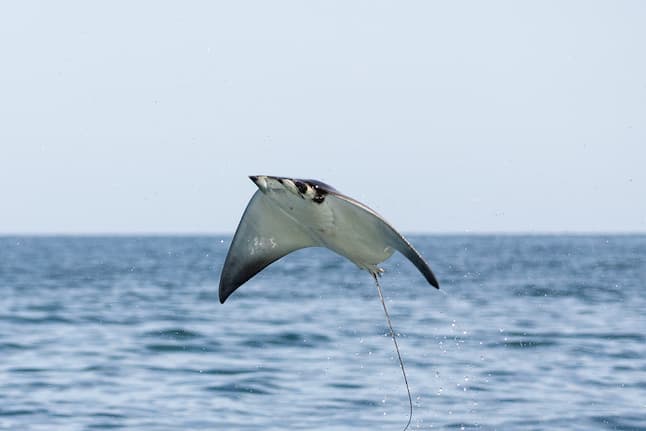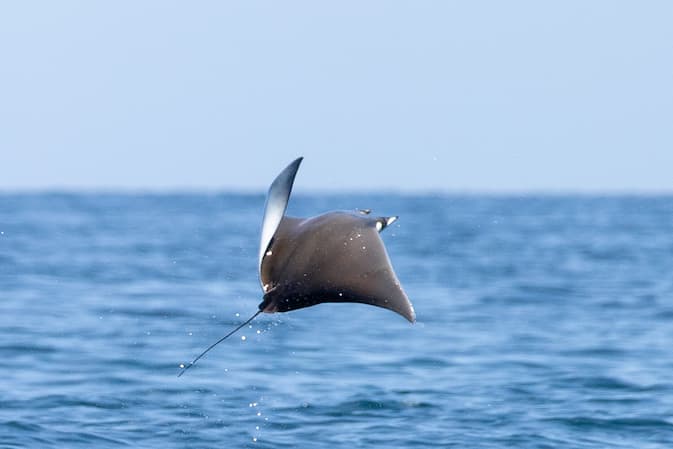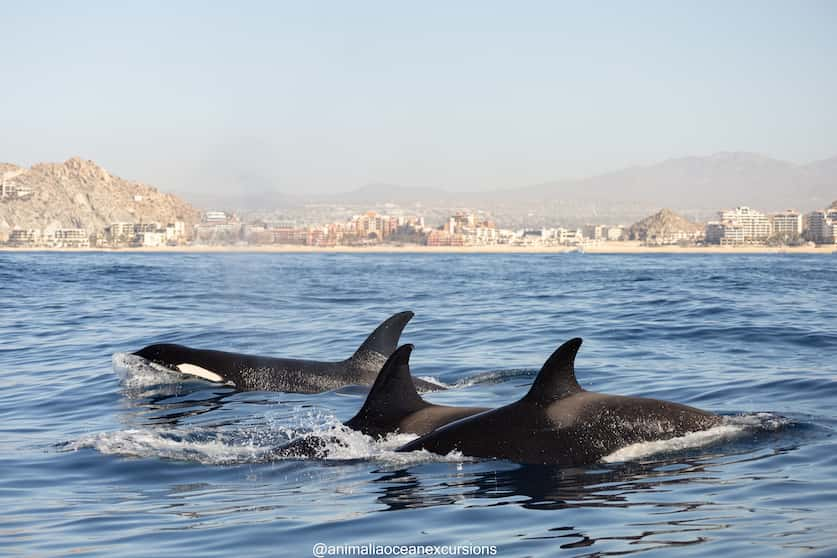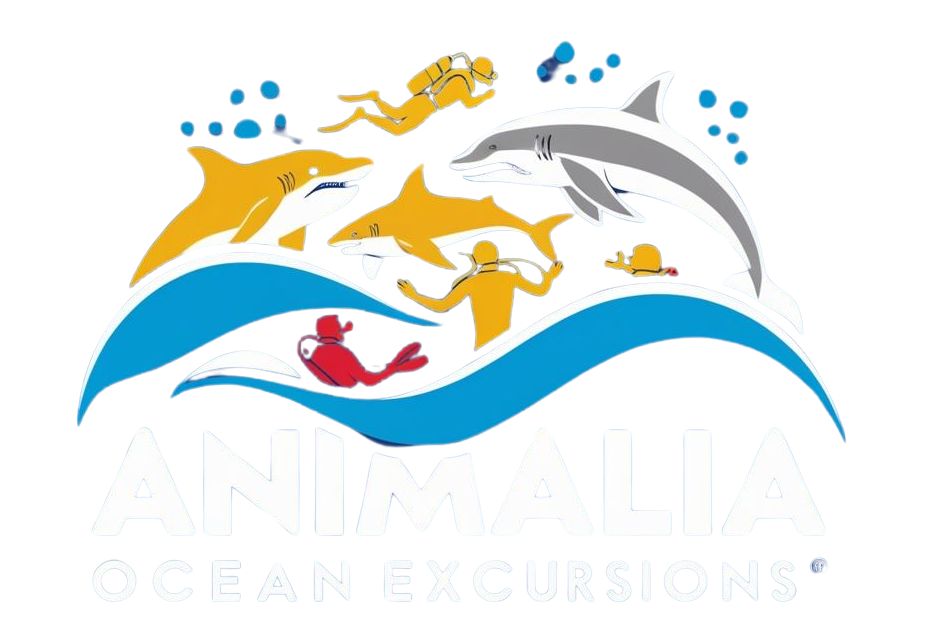If you’ve ever dreamed of witnessing one of the ocean’s most rewarding spectacles, the mobula ray aggregations in Cabo San Lucas, La Ventana, and Baja California Sur should be at the top of your list. At Animalia Ocean Excursion, we offer unforgettable ocean safaris where you can observe these incredible marine creatures in their natural habitat. But why do mobula rays gather in such large numbers here, and what makes Baja California Sur one of the best places in the world to see them? Let’s dive into the science behind this phenomenon.

Why Do Mobula Rays Gather in Baja California Sur?
Unlike other regions of the Pacific Ocean where mobula rays are seen sporadically or maybe in smaller aggregations, Baja California Sur is a global hotspot for massive mobula ray aggregations. These gatherings serve several purposes, including:
Breeding and Courtship: The primary reason mobula rays congregate is to find mates. During their seasonal gatherings, males engage in impressive aerial acrobatics—leaping high out of the water, flipping, and splashing back down in spectacular displays to attract females. And it´s not that different than seeing giant pacific manta rays when they are doing something called the “train of love” where the males get in line following the female for a long time repeating what she is doing. If she flip to the right they all do it, if she breach out they all do it until some of the males start coming out of this train until only one is so persistent on the female. This of course is on a small scale as there are not so many giant manta rays as mobula rays probably. Can you imagine a huge agregation of giant manta rays like the mobula rays? On my point of view probrabley 100 years ago there could be much more.
Protection from Predators: Large schools provide safety in numbers. By swimming together, mobula rays reduce the risk of predation from sharks, orcas, and other large marine predators found in the waters of the Pacific. Still I have seen some pods of Orcas chasing mobula rays close to the beach and that is an easier way for Orcas to feed on them but would mobulas feel like the chances are lower together? Actually as more food in the water more chances to find more predators. As sharks could try to feed on them, also orcas could try to feed on sharks and mobulas. They are the apex predator in the ocean.
Feeding Opportunities: While their aggregations are not primarily for feeding, mobula rays do take advantage of plankton blooms in Baja’s nutrient-rich waters, particularly during their seasonal migrations. As they are filter feeders like some whales, they have their mouth in front and not on the belly area as sting rays. Still the plankton could be enought for them to feed but not that much for some kind of whales like humpback and grey whales who are fasting during the winter as their main food is during the summer in the north. But blue whales do feed on this krill in the Gold of California as they need to be eating all the time because they are really big animals

Are Mobula Rays Always in Baja California Sur, or Do They Migrate?
Mobula rays are seasonal visitors to Baja California Sur, typically appearing in large numbers between April and July and again in October and November. They migrate along the Pacific coast, following warm currents and plankton blooms. Although they are seen year-round in some areas, their most spectacular aggregations happen during these peak seasons.
May be every year depending on current changes they could either comer earlier or later. The same happens with whales comming down to their breeding ground in Baja California Sur, some years they migrate earlier or later depending now on how climate change is doing.
What Predators Do Mobula Rays Face in This Region
While mobula rays use their large schools as protection, they are still preyed upon by several apex predators, including:
Sharks: Great white sharks, hammerhead sharks, and tiger sharks are known to hunt mobula rays in Baja California Sur.
Orcas (Killer Whales): Highly intelligent and strategic, orcas are among the most formidable predators of mobula rays, often working in groups to hunt them.

What Is It Like to See Mobula Rays on an Ocean Safari?
Joining an ocean safari with Animalia Ocean Excursion offers a front-row seat to this stunning natural event. Depending on your adventure level, you can:
Observe from the Boat: Witness thousands of rays beneath the surface, jumping into the air, and performing their incledibles flips. If you feel confortable in the sea you have this chance to see then really close, sometimes they could be on surface and some other times at the sandy buttom. They are mainly in shallow water where go looking for them as it give us the chance to see them all the time as the deepth is not deeper than 40 or 50 feet, 12 o 15 metres. You can still learn from seeing them on the boat and also some other marine animals. But the marine safari appeared for allowing experience something different with marine life. The important thing is respecting them, trying not to change their behaviour.
Snorkel or Freedive with Them: Get up close and personal in the water as you watch these creatures move gracefully around you. Swimming with them is a peaceful and amazing experience that just a few people get to witness. What is important while freediving with them is trying to be on the side of the aggregation instead of falling on top of the and avoid that they change their direction. They need to feel like our presence is not there. What we see underwater is like a giant train nonstop of rays like a black ball flying underwater somewhere. Still even that they are from the same family of giant manta rays, they don´t interect with us like some giant manta rays do with divers and freedivers in Revillagigedo. It´s awsome seeing the mobula rays but they are a cold blood fish and are on their mood. On my point of view I like to believe that those intelligent giant manta rays recognize us. I say us talking to the dive guides that are there scuba diving for a complete month and on my personal experience working with them, they come closer to the guides when we move away of the dive group. In the case of the mobula rays, much smaller animals but huge aggregations they probably wouldn´t stop to see us. They don´t look curious at all.
Are Mobula Rays Dangerous? Myths vs. Reality
Many people associate rays with danger due to their distant relatives, stingrays and the way Steve Irwin past away. In fact you certainly have almost no chance to happen something like that with stingrays venomous unless you are really allergic, but the main problem was that he got on top of a big stingray and it wasn´t the poisson but the sting on his heart like a stab what couse his dead.
However, mobula rays are completely harmless to humans! Unlike stingrays, they do not have venomous barbs and are gentle, inquisitive fish that pose no threat. In fact, being in the water with them is a safe and unforgettable experience that allows you to connect with the ocean in a truly unique way.
What would be great for everybody is to be in the water with many marine life. Regular people who saw so many movies about different terrorific marine animals would probably change the bad perception they have and problable they would change what the used to believe about it. Probably the most scary thing in the oceans are humans. Most of marine life have been in the oceans for millons of years before humans and are the last 70 year when we started to travel more and experience being in different beaches around the world and of course there could be incidents.
Why Choose Animalia Ocean Excursion for Your Mobula Ray Safari?
At Animalia Ocean Excursion, we specialize in small-group, eco-friendly ocean safaris designed to provide a responsible wildlife ecoexperience. Our expert guides ensure you have the best possible chance to witness and understand the behavior of these fascinating creatures while respecting their natural environment.
Recent Posts
- Experience the Magic of Mobula Rays on an Ocean Safari in Cabo San Lucas & La Ventana
- Exploring Cetaceans – Whales in Baja California Sur: Where, When, and How to See Them in the Wild
- The Complete Guide to Scuba Diving in Cabo San Lucas
- Ocean Safari in La Ventana: A family Friendly Adventure
- How to do responsible whale whatching in Cabo San Lucas

Recent Comments